The intercooler is an integral part of the engine system that is equipped with turbocharging. It cools the air flow that passes through the supervision and acts as a heat exchange system. In other words, the intercooler sucks from the air flow warm air coming from compression. The main criteria that are guided by developers when creating an intercooler is an increase in flow inertia, low pressure loss and maximum heat dissipation.
Content
- Intercooler why it is needed and where is located
- Intercooler, his positive moments
- Causes of oil appearance in the intercooler
- Check the drain oil pipeline on bends
- Inspection of the air duct and filter
- Plot in the drain oil
- If the sealing rings in the cylindrophone group came into disrepair
- How and what to rinse the intercooler, the course of work in stages
- Tips of professionals
Intercooler why it is needed and where is located
If the design of your car includes turbocharging, the absorbable air is capable of compressing strongly, which significantly increases the density and temperature of the air mixture. In addition, the air warms the turbocharger itself by means of exhaust gases.
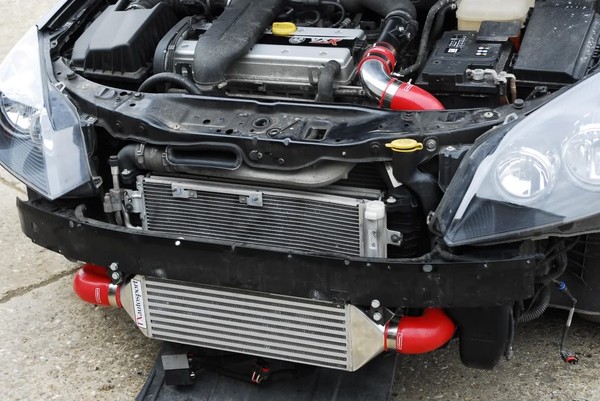
During the increase in temperature, the opposite process occurs - a decrease in the density of the air, as a result of which the pressure is reduced during supervision. To reduce this temperature and use the intercooler. It can reduce it by 50 or 60 degrees Celsius. Thus, the cylinders are filled with air in more quantity, which increases the power of the vehicle. It is believed that during a decrease in temperature for ten degrees, the car's power grows by three percent. Approximately the intercooler can increase the power of the motor to twenty percent and reduce the probability of detonation of exhaust gases.
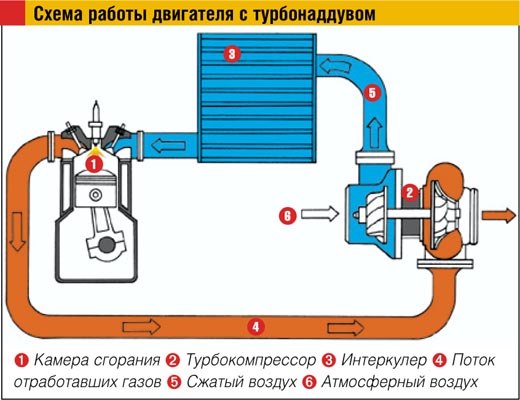
The intercooler is installed between the compressor and the intake manifold. The device is a kind of heat exchanger consisting of a complex system of plates and tubes, which are made of copper and aluminum and have good heat transfer and thermal conductivity. The tubes have an ornate design, which increases the length by which the air is moving. Plates are capable of increasing the surface area and provide better heat transfer. For good air distribution in the tubes, use final tanks that are welded around the edges.
Air-cooled intercoolers, usually mounted under the hood of the vehicle in the following places:
1.In the effective and widespread way is to install an intercooler behind the front bumper, while the air intake is cut in the bumper.
2. Over the motor, air intakes are in the hood.
3. On the sides of the wings, the air intakes are also made in the hood.
In addition, there are intercoolers with water or liquid cooling. Although today, there are both unique intercoolers with ice cooling or liquid nitrogen. Compared to air, they have a more serious and complex design. In addition to a water heat exchanger, they have the following elements - a system of nozzles, an air radiator, controlled module and a water pump.
Intercooler, his positive moments
The use of an intercooler allows you to achieve a number of positive changes:
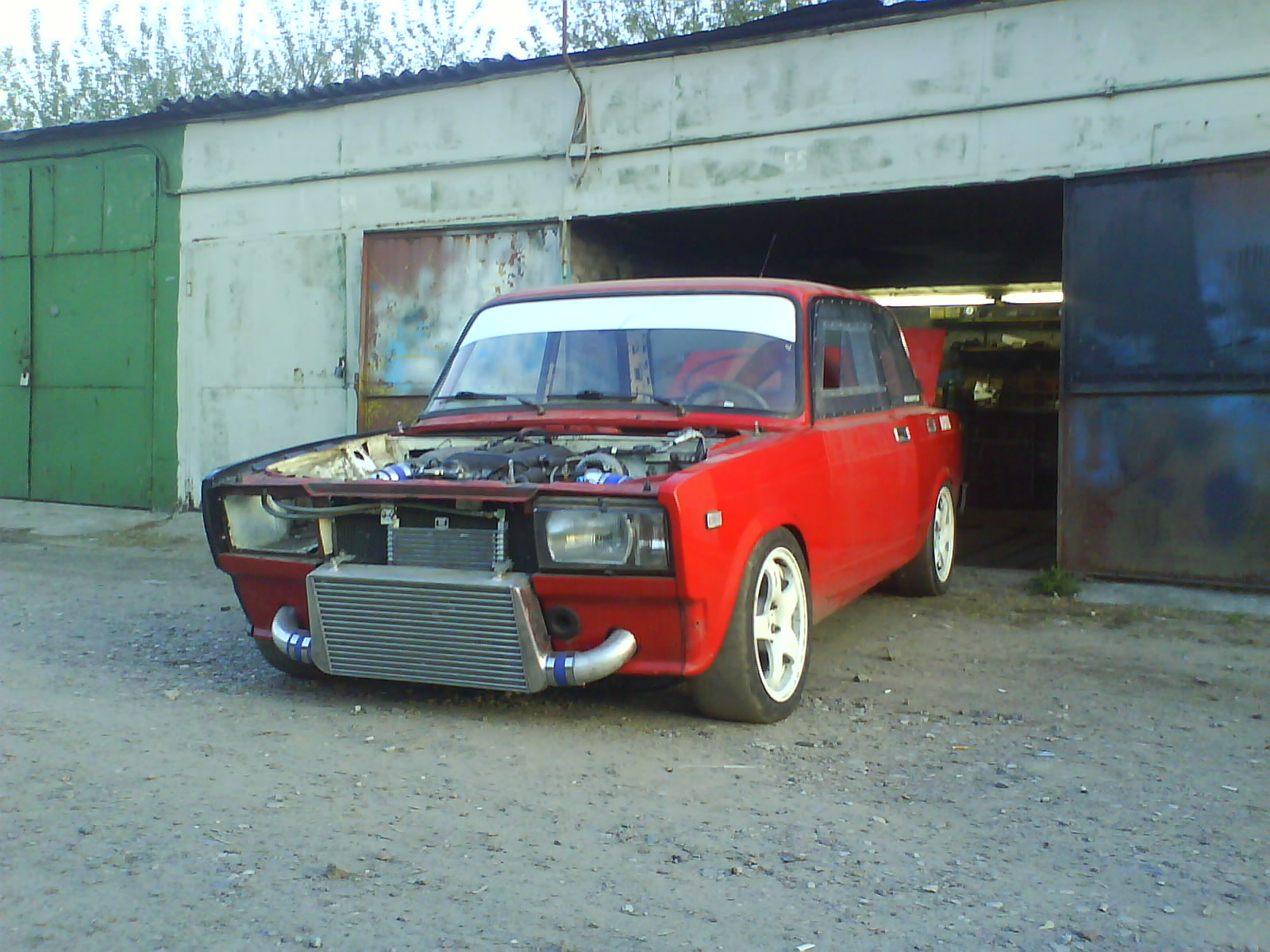
1. Linges fuel consumption.
2. Reduces the content in exhaust gases of toxic substances.
3. Enhances engine power.
4. Increases the speed of the engine reaction to the change of fuel supply.
Causes of oil appearance in the intercooler
Motor oil is used to reduce friction between working parts of the turbocharger, otherwise they will come into disrepair for a slight time of operation of the vehicle. To get oil, the turbine supports communication with the engine. Professionals advise on turbocharged engines to change it more often.
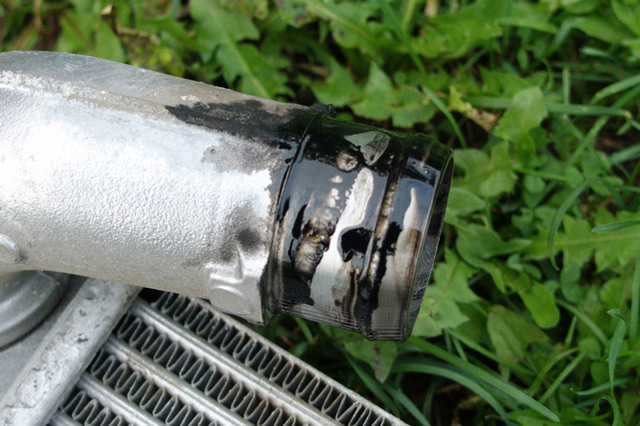
If you notice the first signs of the appearance of an oil turbocharger in the intercooler, you should drive the vehicle to the observation hole or raise it on the lift. It is necessary to remove the motor protection and thoroughly inspect everything to determine the causes of the breakage.
The reasons for the appearance in the oil intercooler may be several:
1. If the drain oil pipeline was deformed.
2. If the air duct is damaged.
3. If the oil pipeline clogged.
4. If the sealing rings acted in the cylinder-piston group.
Check the drain oil pipeline on bends
The oil pipe is placed between the turbine and the motor crankcase. It delivers motor oil from the crankcase to the turbocharger. It is represented in the form of a durable curved tube, for the manufacture of which the steel durable material is used, which is difficult to deform.
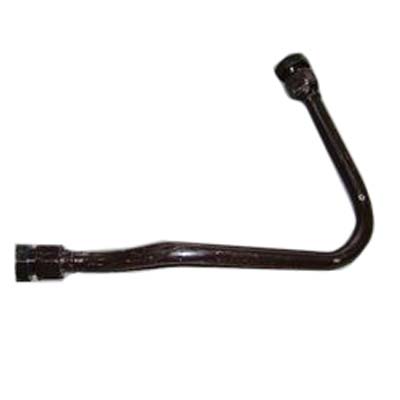
However, with long-term operation, external factors change the shape of the oil pipeline, which entails a violation of its functions.
The deformation significantly reduces its bandwidth and increases pressure in the system. As a result, the oil pipe is not capable of promptly deliver the right amount of motor oil to the turbocharger. In addition, the oil begins to look for ways out and penetrates the intercooler through the sealing material.
When checking, it is necessary to estimate the state of the drain oil pipeline and its appearance. With obvious signs of deformation, it is impossible to return it to the original appearance. The problem is solved by replacing it.
Inspection of the air duct and filter
With long-term use of the vehicle, the air duct may be damaged, as a result of which the turbocharger will drive the oil in the intercooler. At the same time, cracks and other damage that cause external mechanical effects will appear in the air duct. This forms the discharge zone that attracts the motor oil and pulls into the intercooler. The destruction of the sealing material occurs, which entails rapid pollution of the intercooler with oil.
If the damage to the duct and filters is minor, they can be repaired. Otherwise, without replacing the item can not do.
Plot in the drain oil
The vehicle is older, the more troubles. Over time, the turbocharged car is polluted in turbocharged cars, which also leads to the appearance of oil in the intercooler.
As a result of disorders of oil change intervals and long operation of the machine, the inner surface of the element is becoming deposits, which disrupts the throughput of the oil pipe. Thus, the excess pressure displaces the oil in the intercooler.
To eliminate the breakdown, you need to dismantle and clean the oil pipeline. To achieve the maximum effect from the procedure, it is necessary to replace the engine oil.
If the sealing rings in the cylindrophone group came into disrepair
Such problems may occur in violation of the ventilation of the crankcase. The reason for this may be the deformation of the sealing rings of cylinders and pistons. In this case, the exhausts penetrate the inside of the crankcase and displacing the oil into the intercooler through the drain tube. Such a situation is not easy to solve - a major repair of the engine is needed with the installation of new seals, pistons and rings.
How and what to rinse the intercooler, the course of work in stages
To identify the original source of the appearance in the intercooler of the oil and eliminate the breakdown - it is only part of the work. It is necessary to make a deep cleaning of the internal intercooler. The oil should not be mixed with air, which moves along the radiator and apply the fuel quality damage. In this case, the mechanism will not be able to properly cope with the required functions and the advantages of its installation will be lost.
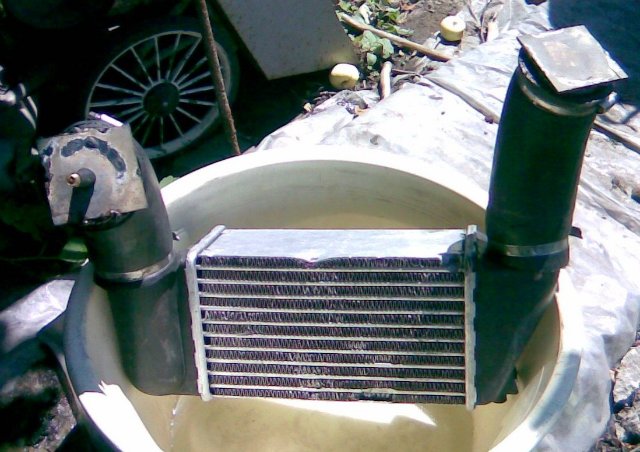
To clear the item, you can contact a special auto repair shop, but this procedure is quite expensive. If you decide to clean the intercooler yourself, it is necessary to perform such a number of actions:
1.Demon element.
2. Clear from internal pollution.
3. Rinse from oil.
4. dry.
5. Install back.
The whole process takes about two or three hours.
To dismantle the intercooler, it is necessary to remove the fastening bolts and break the clamps. Now the intercooler can be removed. To relieve liquid details, you will need more time and additional tools.
The instrument cleaning means should be chosen according to the vehicle operating instructions. To use kerosene intercooler to clean the intercooler, gasoline or white spirit is necessary with extreme caution, as they are able to spoil the element.
Intercooler, which is strongly contaminated needed to rinse in four stages:
1. Just the stones and the growths mechanically and straighten the sections that are deformed.
2. We clean from the dirt with the help of automotive chemistry.
3. Rinse the intercooler from oil with special means.
4. Wash water to the remains of chemistry.
Tips of professionals
1. All operations for removing the intercooler should be made on the cooled vehicle and when the ignition system is disconnected.
2. In order not to damage the cells of the intercooler, you should be neat with water pressure.
3. If pure water comes out of the intercoupler, then the cleaning process is completed.
Related Materials
- Stove 2110, bad warm stove 2110, VAZ 2110 heating system, repairing the heating system VAZ 2110 with their own hands
- VAZ 2114 stove blows with cold air, stove 2114, bad warm stove VAZ 2114, device and repair of heating VAZ 2114 do-it-yourself, removing the stove VAZ 2114
- How to subdominize the car. How to put a jack. Types of jacks for cars.
- VAZ 2109 Fuse Block, VAZ 2109 Fuse Block Carburetor, VAZ 2109 Fuse Block Injector, Old VAZ 2109 Fuse Block, VAZ 2109 Fuse Block, VAZ Fuse Block 2109
- Car exhaust gas catalyst, faulty catalyst, pluses and cons of the catalyst, how to change the catalyst on the planeencitel
- Stove blowing cold air VAZ 2114, badly blowing the stove VAZ 2114, why badly blowing the stove VAZ 2114
- How to find out the owner of the car by the number of his car, check the car by the number of the traffic police machine, check the car by the state number of the car for free
- How to choose Used tires, Useful Tips
- Winter car road, pressure in passenger car tires in winter, good battery for the car in winter, whether to warm the car in winter
- In winter, the car is poorly started. How to make a car in winter, do you need to warm up the car in winter, useful tips
- Economy fuel consumption machines, the most economical car consumption
- Tires brands for passenger cars, labeling of car tire labeling, residual passenger car tire protector, how to pick a tire on a car brand, car tire tread pattern
- Working transmission operation, mechanical gearbox clutch work, driving with manual gearbox, useful tips
- Rear beam Peugeot 206 sedan, rear beam device Peugeot 206. Rear beam Peugeot 206 Malfunction, repair of the rear beam Peugeot 206
- Diesel fuel in winter, additive for diesel fuel in winter, how to choose the best diesel fuel
- Diesel winter does not start. How to start diesel in winter, heating diesel in winter.
- Japanese bridgestone tires, winter studded bridgestone tires, bridgestone tires brand
- Tire marking decoding for passenger cars, labeling wheels, how to choose the right tires on the disks
- Diesel engine in winter, launch of the diesel engine in winter, what oil to fill in a diesel engine in winter, useful tips
- LED backlight of the car, the backlight of the bottom of the car, the backlight of the legs in the car, the backlight in the door of the car, the backlight of the car is fine
- Recovered tires, bus tire, restored tire protector, can I use them
- Choose winter tires, which is a winter tires, which pressure in winter tires should be marked with winter tires, how to choose the right winter tires, the best winter tires 2019
- Steering rail rail, knock of steering rack, reasons for the knock and repair of the steering rack do it yourself
- Cameless car tires, a set for repair of tubeless tires, repair of the cannon-free tire do it yourself
- Russian tires, Russian tires Winter, Russian All-season tires, Voronezh AMTEL tires, Tires "Matador Omsk Tire", Kama-tires are world-class bus
- How to open a car without a key. Lost the key from the car what to do, the key from the car inside the car
- Silent tires, quiet winter tires, quiet studded bus, which tires to choose, overview tires
- Tires and safety, safety of the bus, why it is necessary to constantly monitor car tires
- Rules of safe driving of the car in the rain and slush, safe driving of the car for beginners
- Rust converter which is better for cars, rust converters to choose how to use rust transducer, professionals
- Polishing the body of the car do it yourself, how to choose a polishing paste, useful tips
- Engine durability, engine life, how to extend engine life
- Knock in the car. Knock when moving the car. What can knock in the car. How to determine the cause of the knock.
- ABS car, what is ABS car, ABS system malfunction, ABS diagnostics
- Overtaking a car when you can start overtaking a car, rules of traffic rules
- Fuel pump VAZ 2110, VAZ 2110 gas station scheme, VAZ 2110 fuel pump device, VAZ 2110 gas station repair,
- Automotive antennas for radio, automotive antenna device, car antenna do it yourself
- Front suspension Kalina, device front suspension Kalina, knock in front suspension Kalina, repair of front suspension Kalina
- Shock absorber Oil, best oil shock absorbers, pumping oil shock absorbers, how to properly pump oil shock absorber
- Clutch malfunctions, touches clutch, causes a clutch malfunction, how to eliminate

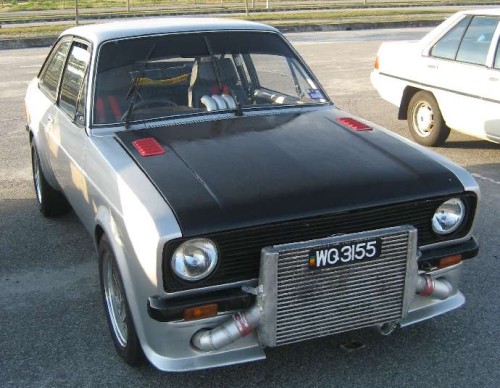
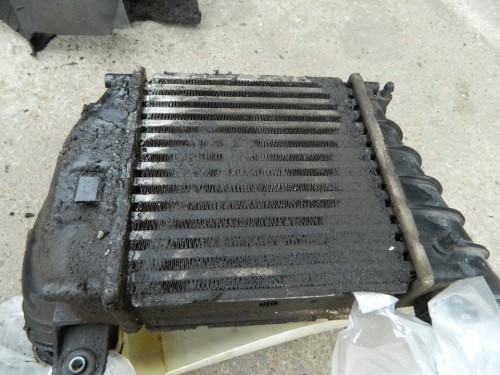
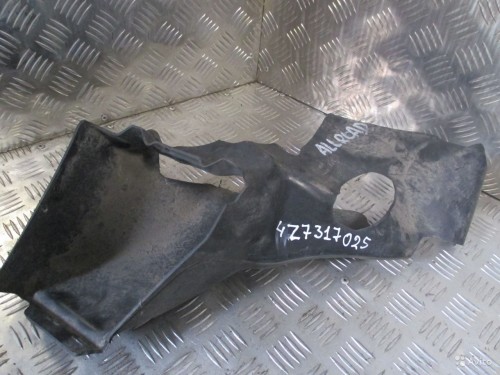
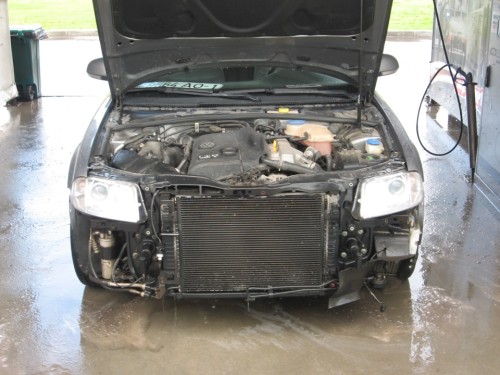






Comments